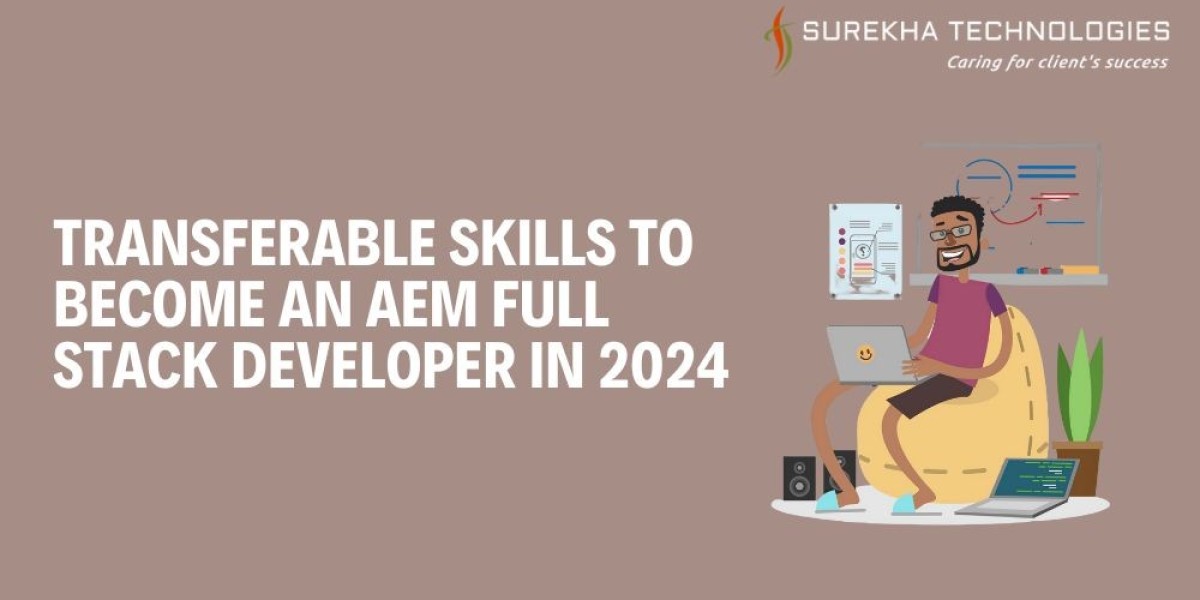In the fast-paced digital landscape of 2024, the demand for skilled Adobe Experience Manager (AEM) full stack developers is skyrocketing. Organizations are leveraging the power of AEM to manage their content, improve user experiences, and streamline their business operations. Whether you’re a front-end developer, a back-end engineer, or even from a non-tech background, many transferable skills can help you become an AEM full stack developer. This article will delve into the top transferable skills needed in 2024 to succeed in this role and how you can position yourself to thrive in the world of AEM development.
1. Strong Understanding of Web Development Fundamentals
To succeed as an AEM full stack developer, it’s essential to have a solid grasp of web development fundamentals. These include HTML, CSS, and JavaScript for front-end development, along with server-side programming languages such as Java for back-end work. Even if you come from a different tech background like WordPress or Drupal, your foundational knowledge of web development is a highly transferable skill.
AEM is built on Java, and knowing Java-based frameworks like Spring can significantly reduce the learning curve. If you're experienced in other server-side technologies, the logic of handling requests, managing databases, and rendering views is similar. A good understanding of HTTP protocols, APIs, and web security principles will also provide a strong foundation for transitioning into AEM development.
2. Content Management System (CMS) Experience
Experience working with other content management systems (CMS) like WordPress, Joomla, or Drupal is highly transferable when transitioning to AEM. The underlying principles of managing content, structuring websites, and organizing media assets are quite similar across platforms. For instance, if you’re familiar with content modeling in Drupal, you’ll find AEM’s Content Fragment Models and Component Development easier to grasp.
In AEM, developers work extensively with components and templates, which mirror the concept of reusable blocks of content found in other CMS platforms. A strong understanding of CMS workflows, roles, permissions, and publishing mechanisms will make the transition to AEM seamless, especially for those with prior CMS experience.
3. Front-End Development Skills
AEM development involves substantial front-end work. If you’re already proficient in front-end technologies like HTML, CSS, JavaScript, and popular frameworks like React.js or Angular.js, you’re well on your way to becoming a full stack AEM developer. AEM provides flexibility to integrate custom front-end frameworks with back-end capabilities, and having a front-end skill set is crucial for designing responsive and interactive websites.
In 2024, front-end developers who are well-versed in building modern, user-friendly interfaces will find AEM’s front-end tools easy to pick up. Additionally, experience with Single Page Applications (SPAs) and Progressive Web Apps (PWAs) is a major advantage, as these approaches are increasingly being adopted in AEM projects. You can leverage your front-end skills to create seamless user experiences by integrating them with AEM’s back-end content management functionalities.
4. Java Development Expertise
AEM is built on Java, making Java programming experience an essential transferable skill for back-end development in AEM. If you’re proficient in Java or any object-oriented programming languages, transitioning into AEM development will be easier. In AEM, the Sling framework—based on RESTful principles—plays a pivotal role in resource resolution, and Java developers with an understanding of RESTful APIs will adapt quickly.
If you have experience building custom back-end logic in other frameworks, you’ll find similarities when working with AEM’s core components. AEM’s custom back-end workflows, services, and Sling models are written in Java, making this skill set indispensable for full stack AEM developers.
5. Database Management and SQL
Working with databases is a core component of full stack development. Whether you're familiar with SQL databases like MySQL or Oracle or NoSQL databases like MongoDB, database management skills are transferable to AEM development. AEM uses a built-in content repository known as the Java Content Repository (JCR), which functions similarly to databases in how it stores and retrieves data.
Your knowledge of writing queries, optimizing database performance, and handling relational data will help you understand AEM’s JCR and how it manages content hierarchies and assets. Understanding how to interact with AEM’s repository will be crucial in building efficient, scalable applications.
6. API Integration Skills
API integration is a critical skill for any full stack developer, and it’s no different for AEM developers. AEM relies heavily on integrating with third-party services and applications, including eCommerce platforms, CRM systems, and analytics tools. Experience working with APIs, especially RESTful APIs, will be incredibly beneficial for managing these integrations.
In 2024, many organizations are integrating AEM with platforms like Adobe Commerce (Magento), Salesforce, and Google Analytics. If you have experience integrating APIs in other frameworks, such as integrating Stripe for payment gateways or Google Maps APIs for location services, you can easily adapt to integrating similar services into AEM.
Working in an Adobe Commerce Development company and understanding the bridge between AEM and Adobe Commerce will give you an edge. This kind of API integration requires expertise in AEM’s robust integration capabilities and skills that can be transferred from any other API-driven development work.
7. Version Control with Git
Version control is essential in any development role, especially when working on large-scale AEM projects. Experience with Git, GitHub, or GitLab will allow you to manage code repositories, collaborate with teams, and maintain different versions of your project. In an AEM environment, version control is used to manage different branches of your codebase, track changes, and collaborate with other developers.
If you’ve used Git in previous development roles, this skill will be easily transferable to AEM development, where you’ll often need to manage the lifecycle of components and configurations in different environments, such as staging and production.
8. Problem-Solving and Debugging Skills
One of the most critical transferable skills is the ability to troubleshoot and debug code effectively. AEM projects often involve complex architectures, and knowing how to identify issues in the code, resolve bugs, and optimize performance is invaluable. If you come from a background where you’ve solved problems in other frameworks, you can apply the same problem-solving mindset in AEM development.
A good understanding of debugging tools, log analysis, and performance optimization techniques will help you navigate through challenges in AEM projects. The transferable skill of debugging code will also be instrumental when working with AEM-specific logs, understanding error messages, and resolving issues in both front-end and back-end development.
9. Project Management and Agile Methodologies
Many AEM projects follow Agile development practices. If you have experience working in Agile teams, using tools like JIRA, and following Scrum or Kanban methodologies, this is a highly transferable skill to AEM development. Agile project management focuses on iterative development, continuous integration, and regular client feedback—all important aspects of AEM projects.
When you Hire Dedicated AEM Developers, those with experience in Agile development tend to adapt faster to the collaborative, iterative nature of AEM workflows. Whether you have been a product owner, developer, or project manager, your ability to manage projects using Agile methodologies will make you a valuable asset to any AEM team.
10. Communication and Collaboration Skills
While technical skills are critical, soft skills like communication and collaboration are equally important. In large-scale AEM projects, developers often work in cross-functional teams, collaborating with front-end designers, back-end developers, project managers, and clients. If you have experience communicating complex technical concepts to non-technical stakeholders, this is a key transferable skill.
AEM development projects often require developers to explain workflows, functionality, and updates to clients and team members. Good communication skills will also make you more effective in collaborating with designers, marketers, and other departments in creating cohesive digital experiences.
Conclusion
Becoming a full-stack AEM developer in 2024 requires a unique blend of both front-end and back-end skills, with many transferable from other areas of web development. From foundational web development knowledge to experience with CMS platforms, API integration, and Agile methodologies, these skills will set you up for success in AEM development.
As more businesses adopt AEM and integrate it with tools like Adobe Commerce, the demand for skilled AEM developers will only continue to rise. If you’re looking to take your career to the next level, consider honing these transferable skills and exploring opportunities in an Adobe Commerce Development company. When you’re ready to Hire Dedicated AEM Developers, make sure they have the broad range of skills needed to handle the full spectrum of AEM’s capabilities and deliver seamless digital experiences in 2024 and beyond.









